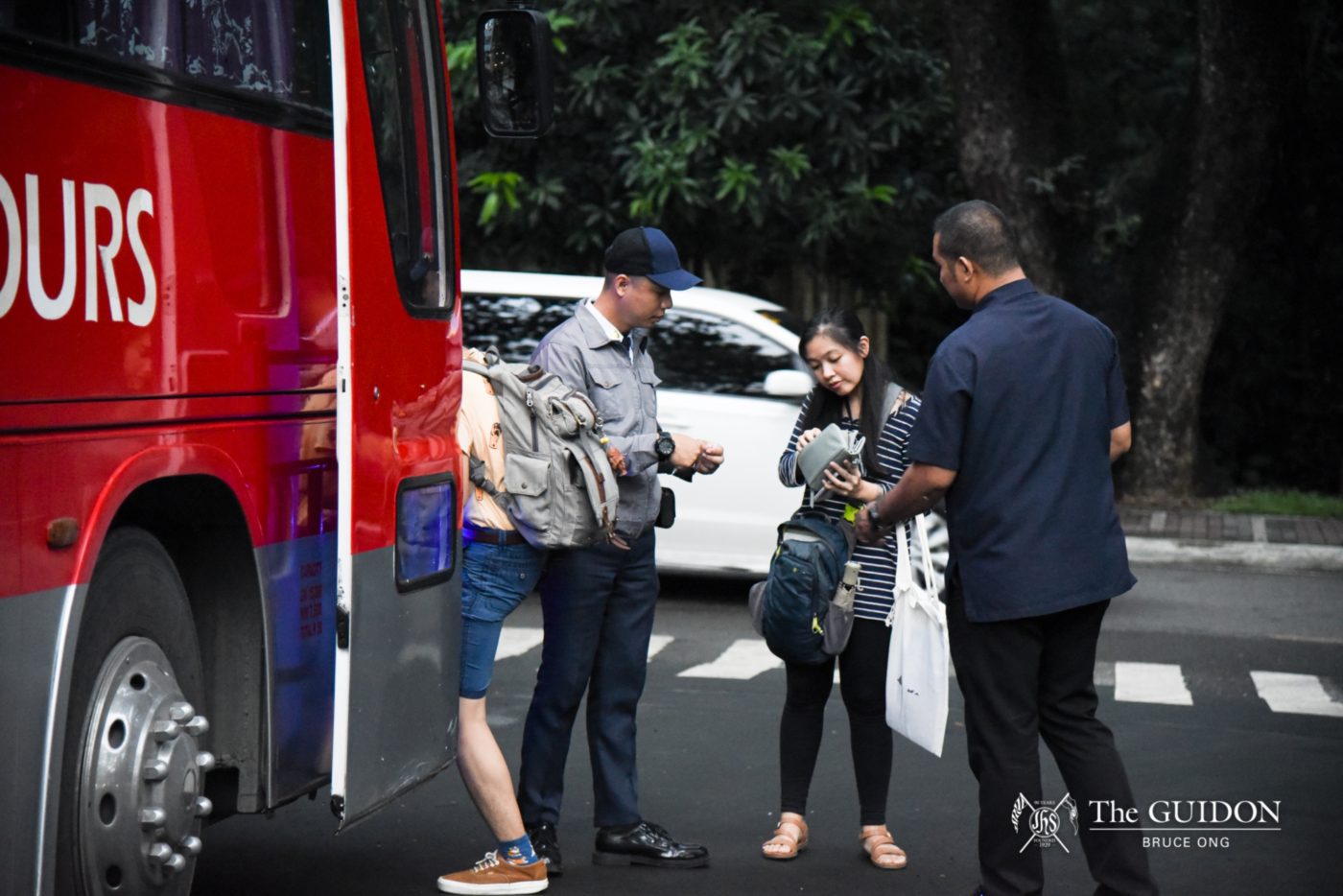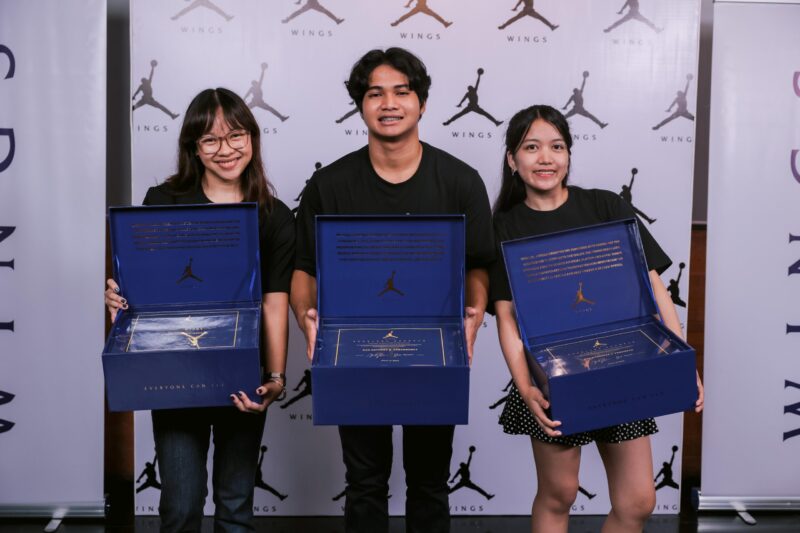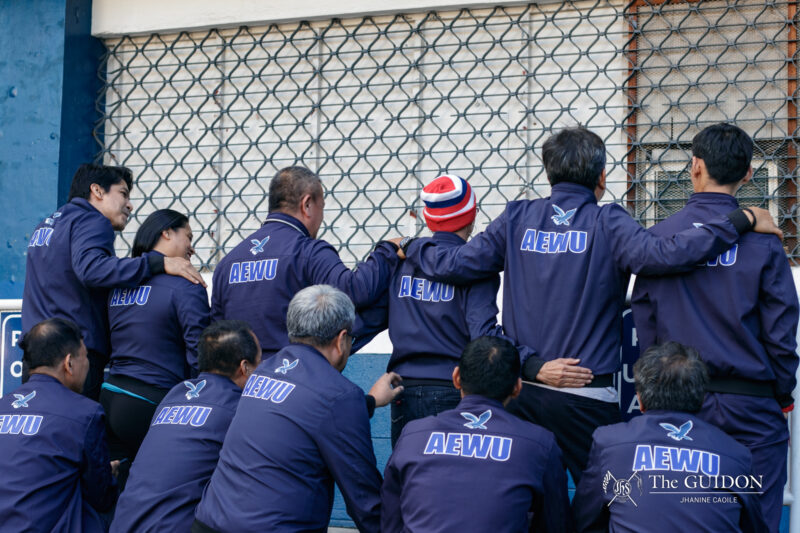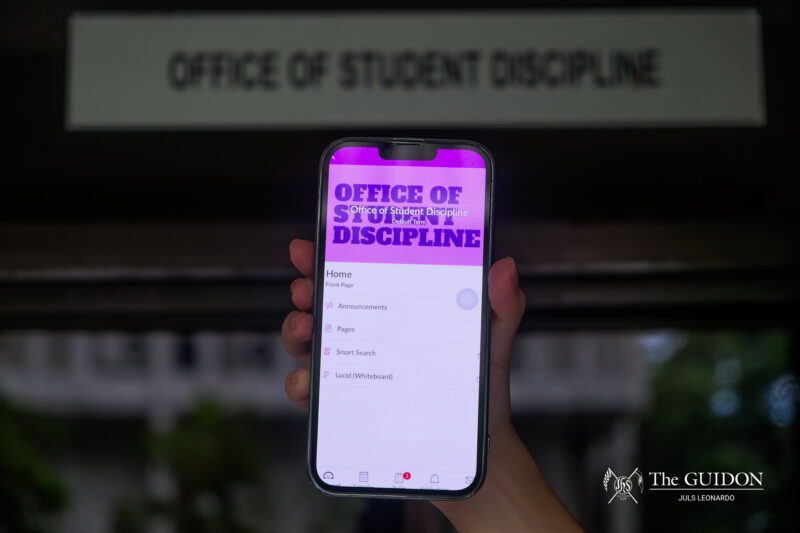AFTER EIGHT weeks of service, Blue Biyahe took its final trip for the semester last December 13. Following the indefinite shutdown of the Manila Light Rail Transit System Line 2 (LRT-2), the Blue Biyahe programs were an effort to mitigate increased fares and longer travel times as a result of the transport crisis.
The Sanggunian, along with the Office of the Associate Dean for Student and Administrative Services (OADSAS) and the Department of Student Welfare and Services (DSWS), first announced the creation of the programs on October 17. The programs offered transportation services to both the Loyola Schools and Senior High School communities through a shuttle bus system, carpool services, and ride-sharing initiatives.
To gauge students’ pulse on a shuttle service project, the Sanggunian released two surveys, one on October 4 and another on October 10, that targeted Atenean commuters affected by the LRT-2 shutdown.
On November 4, the Blue Biyahe programs were temporarily stopped for a few days to change the Yellow Dot Transport shuttles into JTB buses. According to Sanggunian President Quiel Quiwa, the original service provider was not able to accomplish the necessary permits with the Land Transportation Franchising and Regulatory Board.
Though Blue Biyahe has concluded its run for the first semester, Quiwa added that the programs’ continuation for the next semester will depend on support from the administration given the new bus system’s expenses.
Riding for a cause
On October 21, the Sanggunian launched the Blue Biyahe programs’ soft run to effectively aid Atenean commuters on weekdays. The shuttle services, primarily managed by the Sanggunian and OADSAS, previously had nine pick-up and drop-off points, but these have since been reduced to two locations in Robinsons Magnolia and SM Masinag. A total of 49 seating passengers may use the bus service at a time.
As compared to regular commuting, which requires several forms of transportation like taking the train and jeepney, Quiwa claimed that the Blue Biyahe programs helped Ateneans “save time and money because [they] only have to ride once, and [they would] be dropped directly in [the] Ateneo.”
He added that this service system was much safer because the Campus Safety and Mobility Office (CSMO) deployed campus security in each vehicle.
Quiwa stated that the Blue Biyahe fares were waived for scholars. Moreover, the Php 30 fee was also determined as the regular fare for most Atenean commuters based on data from the Sanggunian’s survey on students’ daily commute experiences. He added that the administration took measures to not exceed the data-determined fare.
“The problem with these kinds of services is that it’s expensive. Since this is exclusive for the Ateneo community, part of the expenses is subsidized by the administration to make sure that its affordable for the regular commuters,” said Quiwa.
After the shift from shuttle to bus, the administration started shelling out a larger subsidy than the previous 70% for system expenses because these vehicles were more expensive in terms of their renting and maintenance. He added that this was the major reason why the administration cut down the number of pick-up and drop-off points.
Ever since the programs’ implementation, the Office of Student Services recorded 2,107 ticket sales for trips to and from Ateneo. As of November 11, students availed a total of 1,382 tickets, while employees availed of 725 tickets.
Carpool alternative
Aside from the shuttle services, the Blue Biyahe programs also included their DSWS-managed carpool and ride-sharing initiatives.
According to DSWS Chairperson Izo Echaluse, the incentives for students who volunteer to be carpool drivers include a reserved parking slot on campus and a Php 200 rebate on the campus car sticker per semester, which usually costs Php 850.
Echaluse explained that before the LRT-2 shutdown, there were 17 carpool groups. However, with the implementation of Blue Biyahe, the carpool groups only increased by one, for a total of 18 carpool groups.
He then mentioned that many LRT-2 riders were looking for carpool groups to accommodate them. However, due to the influx in the number of students who need to carpool and the lack of drivers, many requests could not be properly accommodated.
Moreover, Echaluse said that to encourage more carpool volunteers, the DSWS is currently trying to increase the car sticker rebate, include a gas rebate, and give food vouchers to carpool drivers. In addition to this, they plan to promote the program via email to reach more students.
Commuter feedback
A few commuters were able to share their experience with the LRT-2 closure and Blue Biyahe in interviews with The GUIDON.
Ivan Balasia (1 AB MEC) stated that because of the LRT shutdown, he had to spend almost double his usual fare and took a longer time to get home. He said that the implementation of Blue Biyahe was beneficial for him: “I don’t have to go and wait for jeeps and go outside of Ateneo to do so. I don’t have to compete with other commuters as well.”
Additionally, Andrea Posadas (1 AB COM) added that the direct route to Ateneo was helpful. Her being a scholar also helped lessen her expenses for the day as scholars could avail of the service for free.
To ensure the Blue Biyahe’s continuation, Quiwa mentioned that the programs require more feedback from experts of the Ateneo Institute of Sustainability and those who utilize the service. He added that the Sanggunian regularly retrieved statistics and reports from CSMO to ensure that the decisions made for the programs were supported by factual data.
“We are planning to expand the service to the entire Ateneo community if it proves to be effective for the Loyola Schools [as] Blue Biyahe can be a step towards decreasing traffic in Katipunan,” he said.
What do you think about this story? Send your comments and suggestions here: tgdn.co/2ZqqodZ







